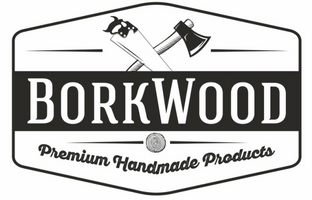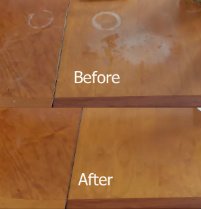How to Clean a Wooden Cutting Board: Keep Your Kitchen Safe and Sanitary
Wooden cutting boards are beautiful and functional kitchen staples, but improper cleaning can lead to a build-up of bacteria and stains. Learning how to clean a wooden cutting board properly is essential for ensuring it lasts for years and remains free of harmful germs. This guide will cover everything you need to know, from everyday cleaning routines to deep cleaning for stubborn stains, and even natural disinfecting methods.How Long Does Wood Glue Take to Dry
Why Clean Your Wooden Cutting Board?
Wooden cutting boards, while naturally antimicrobial to some extent, can harbor bacteria if not cleaned properly. Food particles and juices can get trapped in the grooves and fibers of the wood, creating a breeding ground for harmful germs. Regularly cleaning your cutting board is crucial for preventing the spread of bacteria like E. coli and salmonella, which can cause foodborne illness.
Everyday Cleaning Routine:
- Clean Up Immediately: After each use, promptly remove any leftover food scraps from the board with a paper towel or dish brush.
- Wash with Warm Soapy Water: Gently scrub the entire surface of the board, including the sides and handle, with warm water and a mild dish soap. Pay particular attention to areas around knife marks and grooves where food particles can lodge.
- Don’t Soak! Never submerge your wooden cutting board in water. Prolonged exposure to water can warp and crack the wood.
- Rinse and Dry Thoroughly: Rinse the board with clean water and pat it dry with a clean dish towel.
- Air Dry Completely: Let the cutting board air dry completely upright on a drying rack before storing it. Never store a damp cutting board, as this can promote mold growth.
Deep Cleaning for Stains and Odors:
For stubborn stains or lingering odors, a deeper clean might be necessary. Here are two effective methods:
-
Salt and Lemon Scrub: Sprinkle coarse salt, like kosher salt, over the surface of the cutting board. Cut a lemon in half and scrub the salt into the board using the cut side. The lemon juice acts as a natural bleach and disinfectant, while the salt helps to scour away stains. Let the mixture sit for 5 minutes, then rinse thoroughly with warm water and dry completely.
-
Baking Soda Paste: Create a paste using baking soda and water. Apply the paste to the stained area and scrub with a soft brush. Baking soda is a gentle abrasive that can help remove tough stains without damaging the wood. Rinse thoroughly and dry completely.
Natural Disinfecting Methods:
Once your cutting board is clean, you can disinfect it with a natural solution. Here are two options:
-
White Vinegar: Dilute white vinegar with water in a 1:1 ratio. Pour the solution onto the cutting board and let it sit for 5 minutes. Rinse thoroughly with water and dry completely. Vinegar is a natural disinfectant with deodorizing properties.
-
Hydrogen Peroxide: Use a 3% hydrogen peroxide solution to wipe down the surface of the cutting board. Let it sit for a few minutes before rinsing thoroughly with water and drying completely. Hydrogen peroxide is a safe and effective way to kill bacteria on your cutting board.
Caring for Your Wooden Cutting Board:
- Regular Oil Treatment: To maintain the beauty and longevity of your wooden cutting board, apply a food-grade mineral oil or cutting board oil regularly, following the manufacturer’s instructions. Oiling helps to protect the wood from drying out and cracking.
The Benefits of Wooden Cutting Boards:
While plastic and glass cutting boards have their place, wooden cutting boards offer several advantages:
- Kinder to Knives: Wooden cutting boards are gentler on knives than harder surfaces like glass or stone, helping to preserve the sharpness of your blades.
- Natural Beauty: A well-maintained wooden cutting board adds warmth and character to your kitchen.
Conclusion:
By following these simple steps, you can keep your wooden cutting board clean, safe, and beautiful for years to come. Remember, proper cleaning and maintenance are essential for ensuring your cutting board remains a hygienic and functional tool in your kitchen.







